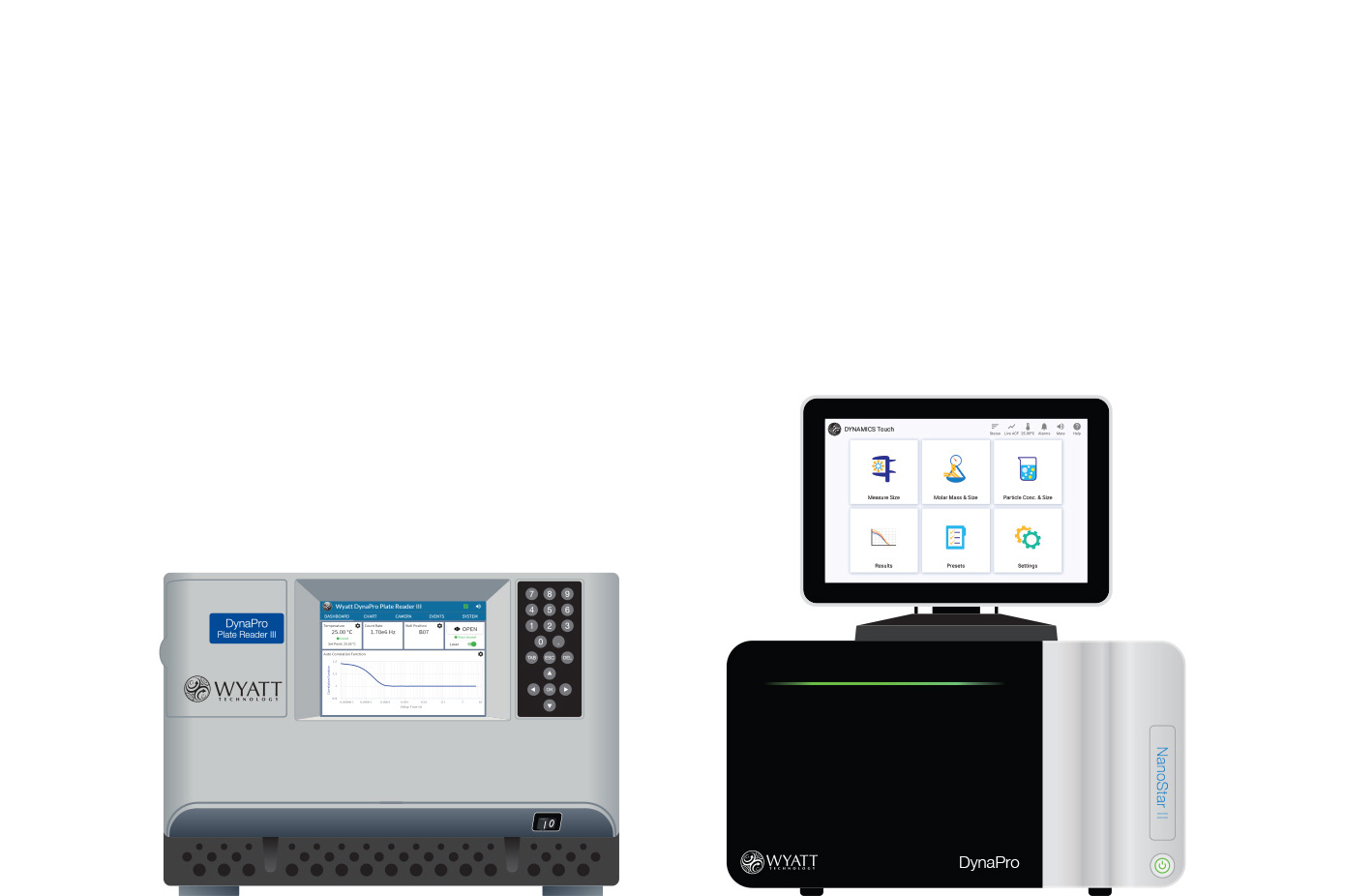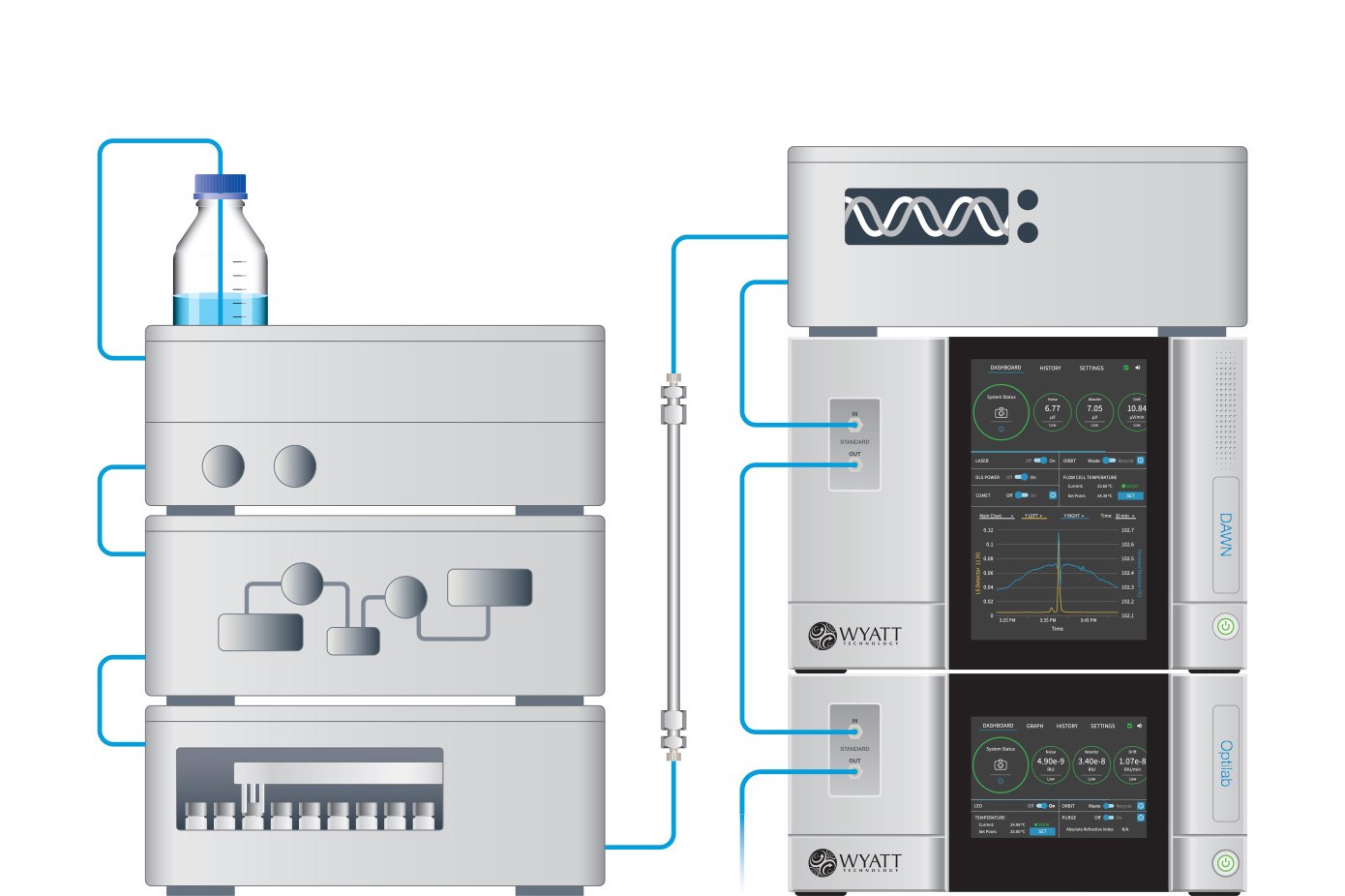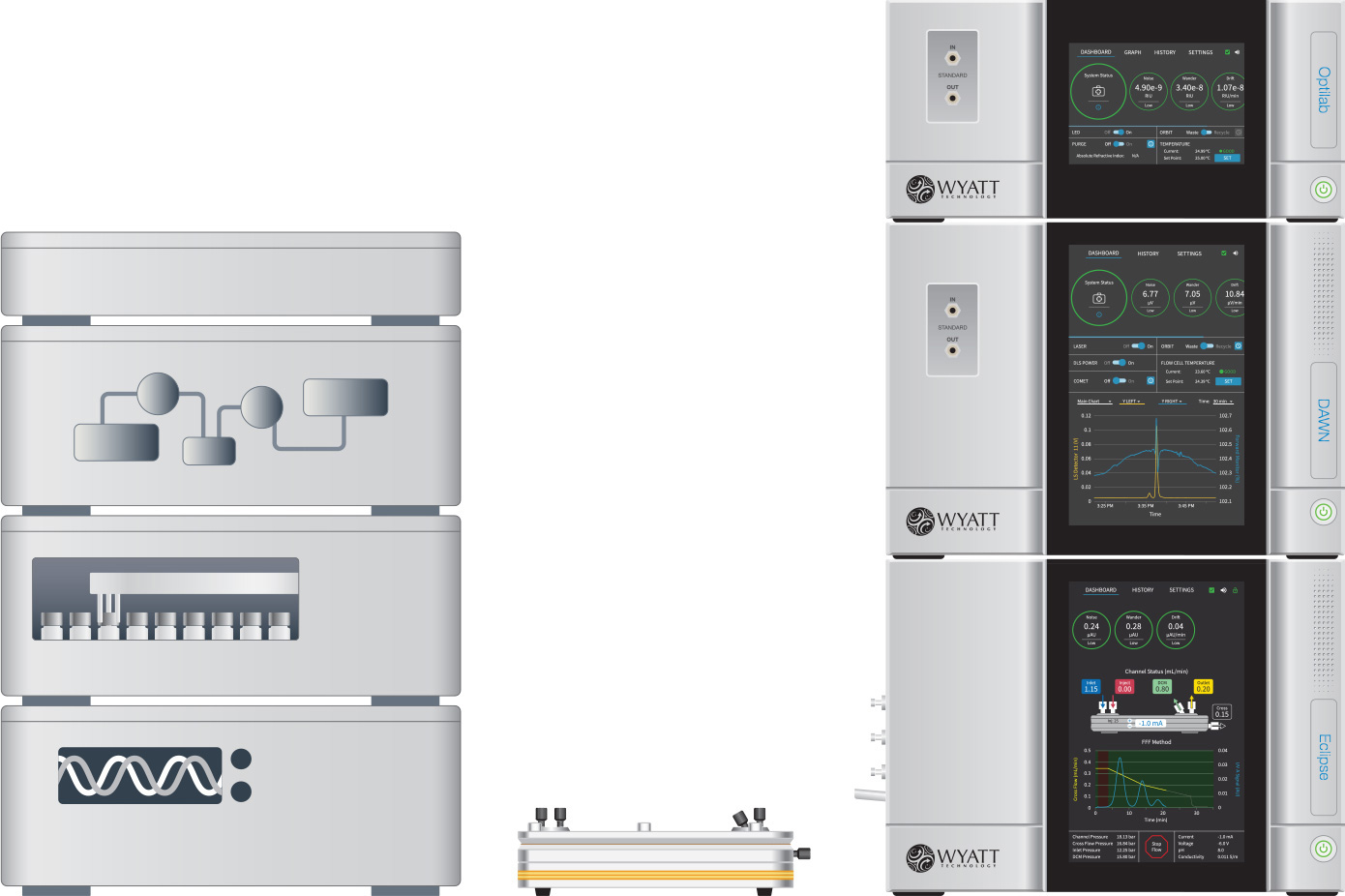AAV aggregate quantification and stability measurements
AAV aggregates are product-related impurities and can result from exposure to unfavorable formulation and storage conditions affecting long-term stability of products. In addition, the presence of drug aggregates may cause immunogenicity, reduce transduction efficiency and lead to problems with biodistribution.
Screening formulations for aggregates at early stages of development helps ensure that only the most suitable formulations move through the production pipeline.
Analytical techniques capable of rapidly monitoring stability are valuable for quantifying precious samples like AAV vectors that are labor intensive and time-consuming to produce. Dynamic light scattering (DLS) and multi-angle light scattering (MALS) coupled with separation techniques (SEC-MALS, FFF-MALS) are common methods to measure stability and aggregates. They reveal important information on product stability and aggregate content along with other critical quality attributes using minimal sample volume.
AAV aggregate characterization by DLS
Measuring size and size distributions by DLS with the DynaPro™ Plate Reader provides a high-throughput assessment of the degree of aggregation under different formulation conditions and the stability of a sample under thermal stress, freeze-thaw, agitation, etc.
DYNAMICS™ software offers a suite of analyses and visualization tools to examine and eliminate samples with aggregates. The figure on the right shows the results of a 45-minute, hands-off experiment, measuring 96 samples in a single well plate.
The DynaPro™ NanoStar™ is a cuvette-based instrument performing the same measurements as the Plate Reader to characterize aggregation and stability, quickly and with small sample volumes. Measurements take place either in a quartz cuvette with volumes as low as 2 µL or in disposable cuvettes with just 4 µL.
The white paper WP5003: Automated dynamic and static light scattering in microwell plates for fast, productive development of biologics describes the capabilities of the DynaPro Plate Reader for performing multiple assays.
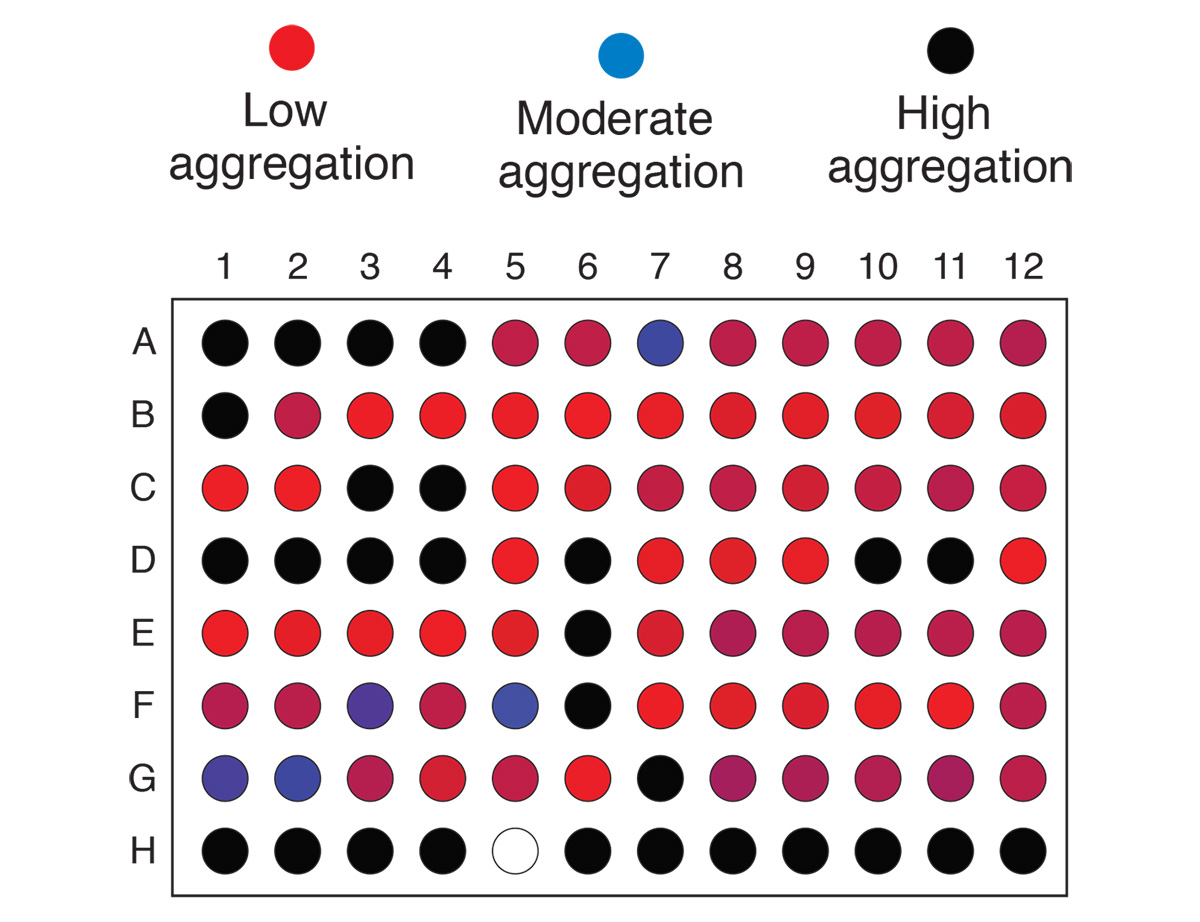
Screening of biologics formulations in a microwell plate provides rapid indication of aggregation.
Why use a DLS plate reader to perform AAV stability assays?
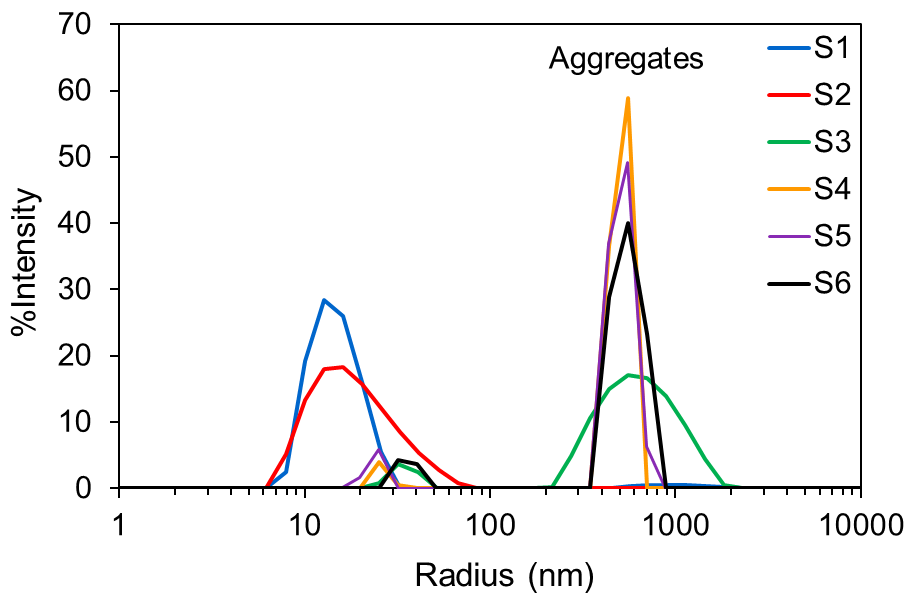
Rapidly identify an optimal mobile phase for SEC, or formulations that yield well-assembled products.
A comparison of six different formulations (S1-S6) by DLS reveals that all except two (S1 and S2) promote aggregation. In S2, broadening of the left-hand peak indicates increased (polydispersity) due to the presence of small oligomers.
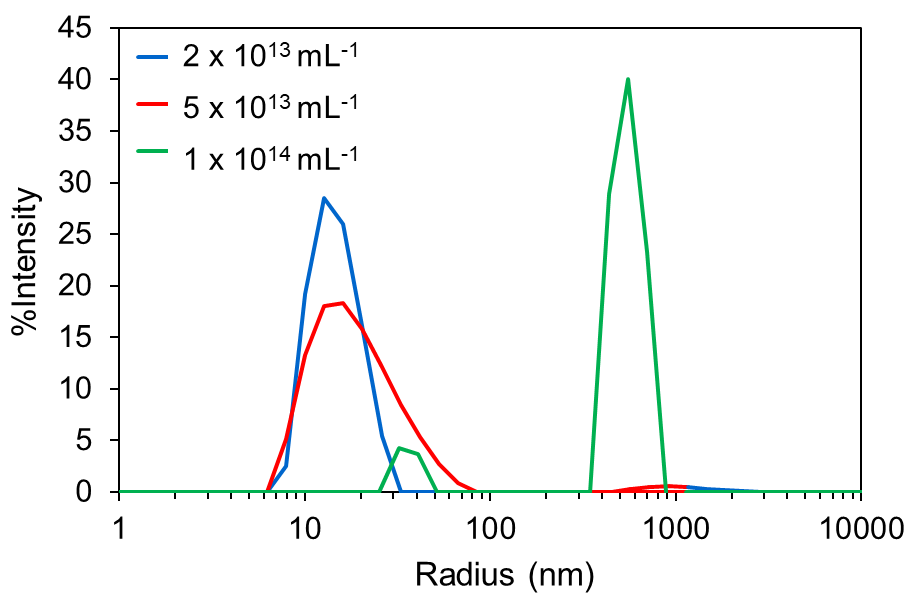
Optimizing AAV concentration to avoid aggregation.
DLS can be used to measure the concentration dependence of aggregation and oligomerization, in order to determine the optimal AAV concentration for that avoidings such processes. The AAV sample at 1x1014 mL-1 shows significant aggregation. Diluting the sample five-fold to 2x1013 mL-1 disaggregates the sample, generating a less polydisperse monomodal sample.
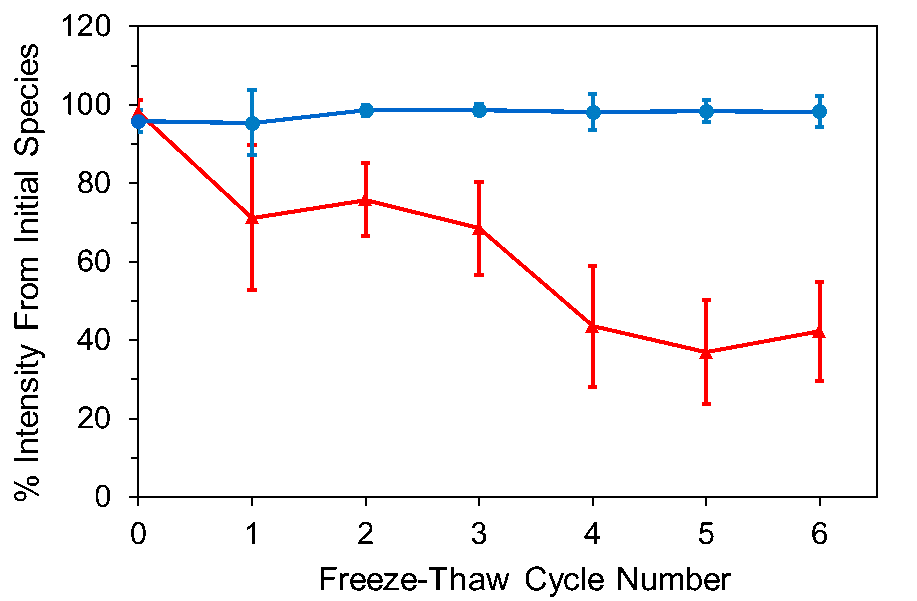
Perform measurements on the same set of samples as a function of time, freeze-thaw cycle, or other stress conditions, all in a single multi-well plate.
Freeze-thaw cycles can lead to aggregation of monomeric virions. Monitoring the light scattering intensity contribution from the AAV monomers is an excellent approach to easily differentiate between stable and unstable products. These data can facilitate optimization of both formulation and storage conditions.
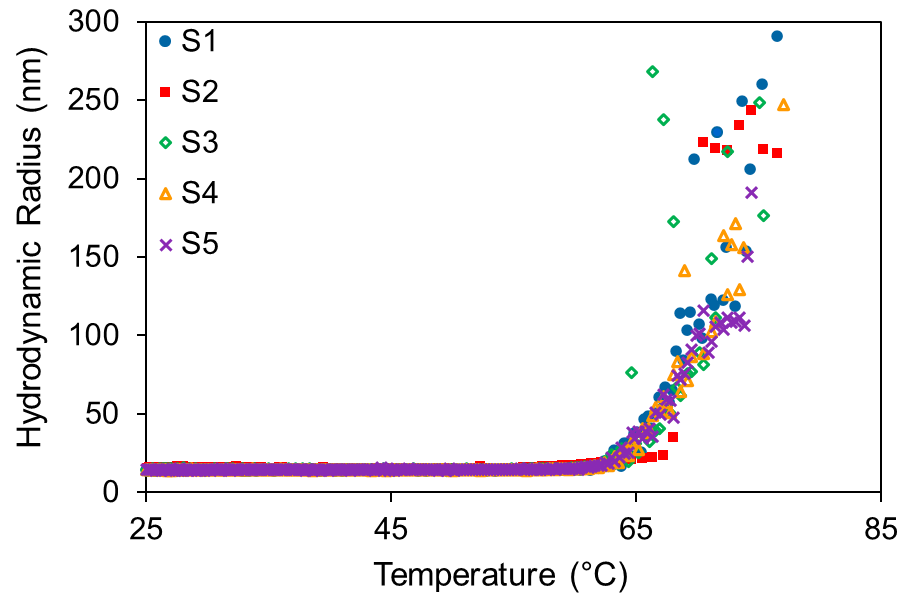
Collect high-throughput measurements of conformational stability via aggregation onset temperature or time to aggregate.
In this example, Tonset was determined for five different formulations of the same AAV by exposing the samples to a temperature ramp and measuring changes in size. The sharp increase in Rh beginning at 62°C in the plot, reflects the onset of aggregation.
Quantifying AAV aggregates with SEC-MALS & FFF-MALS
SEC-MALS is suitable for quantifying AAV aggregates with sizes up to ~50 nm. However, SEC columns may remove or shear larger aggregates, leading to incomplete characterization and quantitation. Field-flow fractionation (FFF) with the Eclipse™ FFF system eliminates the possibility of the sample being degraded or removed by the separation matrix; instead, gentle separation takes place in an open channel. FFF coupled with MALS provides accurate size, molar mass, and particle concentration of large aggregates.
The FFF-MALS fractogram and the SEC-MALS chromatogram indicate that large aggregates with radii larger than 60 nm are only detected by FFF-MALS. Comparing the aggregate content quantified by FFF-MALS and SEC-MALS, there is clear evidence suggesting the loss of aggregates during SEC separation.
The application note AN2004: Why and how to quantify AAV aggregates by FFF-MALS, describes why FFF-MALS is the most appropriate method to characterize AAV aggregates.
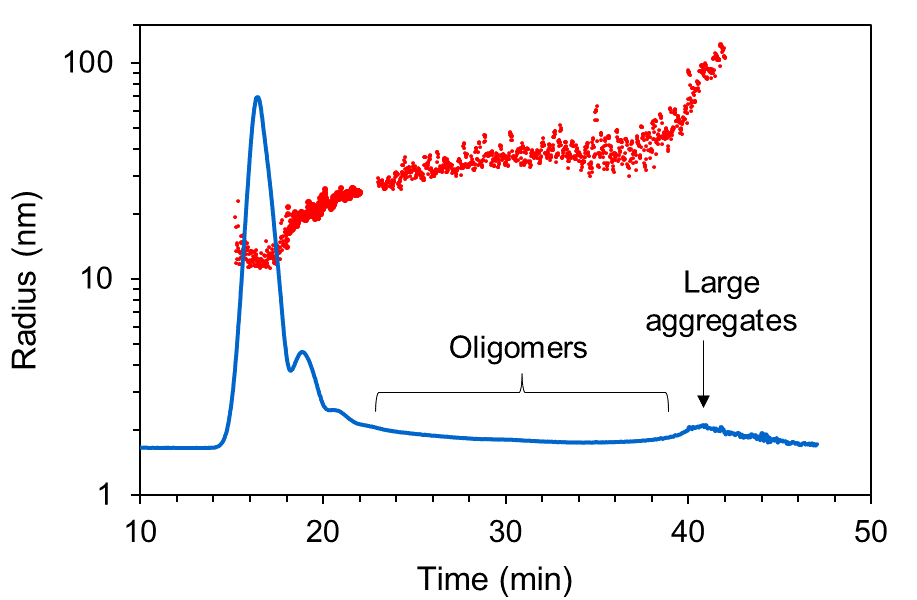
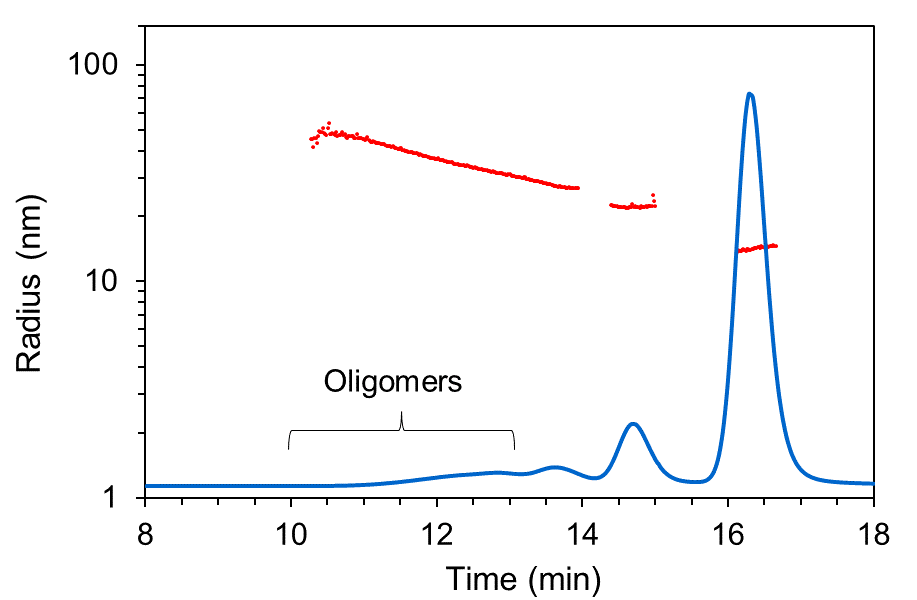
Overlay of rms radius (red) on the light scattering chromatogram (blue) for a full AAV, analyzed by FFF-MALS (left) and SEC-MALS (right).

